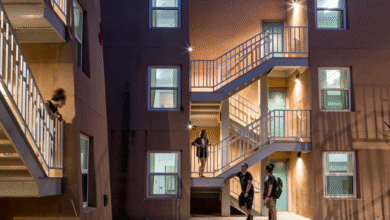Housing Market Trends: Declining Prices and Rising Inventory

In recent months, housing market trends have revealed a significant shift across the United States. Almost one-third of major housing markets are facing declining home prices, and many are struggling to keep pace with the escalating housing inventory increase, which is up 29% compared to last year. As high mortgage rates persist, affordability remains a key concern for potential buyers seeking affordable homes. This landscape is further complicated by pronounced regional price differences, particularly, where areas like the Northeast and Midwest continue to see price surges while the South and West soften. Understanding these trends is essential for navigating today’s dynamic housing environment.
The current landscape of real estate statistics highlights notable changes affecting homebuyers and sellers alike. Market fluctuations, characterized by a stark rise in housing stock and contrasting shifts in property values, illustrate the challenges faced by prospective homeowners. As interest rates hover at their peak, buyers are identifying opportunities for budget-friendly residences amid the complexities of regional pricing disparities. Furthermore, a comprehensive analysis of local markets reveals that while some regions flourish, others witness significant price contractions. This duality within the property market underscores the importance of staying informed about current developments.
Current Housing Market Trends in Major U.S. Cities
The U.S. housing market is currently displaying a complex set of trends, with nearly one-third of major markets experiencing declining home prices. This shift is primarily attributed to overinflated market conditions and a surge in housing inventory, which has increased by approximately 29% compared to last year. As buyers are confronted with higher mortgage rates, the cooling demand has created a market where many sellers are reluctant to list their properties, fearing long selling times and potential losses.
Regional disparities are also significant, with notable differences in price dynamics across various areas. For example, while the Northeast and Midwest are still seeing price increases, areas like Cape Coral, Florida, and some Californian cities, are grappling with sharp declines. Such regional price differences are crucial for buyers and investors to understand, as they can influence local market strategies significantly.
Factors Contributing to Declining Home Prices
Several factors are driving the trend of declining home prices across the U.S. markets. High mortgage rates have played a critical role in slowing down the housing demand, which has been compounded by the ongoing increases in housing inventory. As more homes flood the market, buyers are becoming more selective, resulting in a typical scenario of oversupply versus modest demand. This imbalance often leads to price reductions, particularly in areas where market growth has been sustained by speculative buying.
In many regions, particularly in the South and West, housing prices have not only stagnated but have also begun to decline markedly. The largest recorded drop was in Cape Coral, Florida, where home prices decreased by over 9%. Such declines highlight the volatility and risk inherent in current housing investments, making it increasingly necessary for prospective buyers to monitor local market conditions closely.
The Impact of Housing Inventory Increase on Home Affordability
The recent increase in housing inventory is having a dual effect on home affordability across the U.S. On the one hand, the growing number of available homes can make prices more competitive, thereby creating opportunities for buyers to secure more affordable options. This shift may allow potential homeowners to find properties that fit their budgets more comfortably, especially in markets suffering from declining prices.
However, the increase in inventory comes amid high mortgage rates, which continue to pose a significant challenge for many buyers. Even with better prices in some areas, the overall cost of borrowing remains high, limiting the purchasing power of consumers. Therefore, while some regions are experiencing a healthier supply of affordable homes, the reality of current mortgage conditions complicates the likelihood of substantial increases in home purchases.
Understanding Regional Price Differences in the Housing Market
Regional price differences are an essential aspect of understanding the current housing market landscape. Markets such as the Northeast and Midwest are still experiencing price increases thanks to their strong economic fundamentals, including job growth and desirable living conditions. Conversely, areas such as the South and West are navigating through periods of price reductions, with more buyers shying away due to higher living costs and interest rates.
The differences in regional performance highlight the importance of localized market analysis. Buyers and real estate professionals must consider these fluctuations when making decisions, as what may be true for one market can differ drastically from another. As trends continue to evolve, these regional dynamics will likely play a critical role in shaping future housing strategies.
The Role of Mortgage Rates in the Current Housing Climate
Mortgage rates are a significant factor influencing the current housing market climate. This year, the average rate for a 30-year fixed mortgage has hovered in the high 6% range, which is considerably higher compared to the historically low rates seen during the pandemic. These elevated rates are restricting access to homeownership for many, ultimately contributing to a slowdown in housing demand and impacting sellers’ pricing strategies.
As the mortgage rates stabilize or potentially shift, their impact on the housing market will be closely observed. Should rates decline, there is a likelihood that demand may rise again, potentially balancing the increased inventory with eager buyers looking to capitalize on more affordable financing options. However, until such a shift happens, the current rates pose a hurdle for many prospective homeowners navigating the market.
The Future of Affordable Homes Amidst Market Challenges
With the challenges presented by declining home prices and rising mortgage rates, the outlook for affordable homes remains mixed. While the increase in housing inventory suggests a shift toward affordability, many buyers are still grappling with the financial impact of high-interest loans. The competition for affordable homes may heighten as more people look for options that fit tighter budgets, particularly in markets where inventory is growing.
Many stakeholders, including policymakers and housing advocates, are recognizing the urgent need to address the affordable housing crisis proactively. By implementing strategies to encourage development in more affordable segments of the market, there exist significant opportunities to transform some of the current difficulties into positive growth. Future success will depend on balancing inventory growth, price stabilization, and improving access to financing.
Navigating Home Selling in a Cooling Market
For homeowners looking to sell in a cooling market, understanding the dynamic landscape is imperative. As prices begin to decline and inventory increases, potential sellers may feel hesitant to enter the market. The growing number of homes available leads to increased competition, with buyers having more options to choose from, which may prolong selling times and prompt price reductions.
To navigate these challenges successfully, sellers might consider revisiting their pricing strategies and enhancing the appeal of their homes through renovations or staging. Additionally, understanding local market trends and being aware of regional conditions can better inform sellers of realistic price expectations, ultimately assisting them in making more educated choices.
Tracking Price Changes Across Different Markets
Tracking price changes in various markets is crucial for prospective buyers and investors alike. As the data reveals, many of the largest U.S. housing markets are reporting significant price shifts, with a considerable portion showing declines of at least one percentage point from their recent peaks. This trend warrants attention as it could signal a broader shift in buyer confidence and market stability.
By staying informed about these changes, buyers can position themselves better within the market, capitalizing on regions where prices are softening. Strategies that incorporate diligent market tracking and analysis will provide insights that help buyers make informed decisions, leading to successful transactions amid fluctuating housing dynamics.
Conclusion: The Future Outlook of the Housing Market
As we look ahead, the housing market appears poised for continued transformation. With ongoing trends of declining home prices alongside rising inventory, buyers may benefit from more negotiating power in the coming months. However, challenges presented by high mortgage rates and regional price disparities will require careful navigation.
To succeed in this evolving landscape, stakeholders at all levels—buyers, sellers, and investors—must remain adaptable and well-informed. Emphasizing insightful research and responsiveness to market changes will be vital as the housing market seeks to find equilibrium in these challenging economic conditions.
Frequently Asked Questions
What are the current housing market trends regarding declining home prices?
In recent reports, nearly one-third of the major U.S. housing markets are showing declining home prices. This trend indicates a reversal from the previous surges witnessed during the pandemic era, as homes are now becoming less valuable in certain regions, highlighting the growing divergence in housing market trends.
How is the rise in housing inventory affecting home affordability?
The housing inventory has increased by 29% compared to last year, which is contributing to making homes more affordable in many areas. However, while inventory levels rise, prices are declining in several markets, leading to a complex landscape in housing market trends where affordability is being enhanced through increased supply.
What impact do current mortgage rates have on the housing market trends?
The average rate for a 30-year fixed mortgage is currently in the high 6% range, significantly higher than the rates during the early pandemic. These elevated mortgage rates are impacting buyer demand, contributing to the cooling of the housing market, as potential homeowners find it less affordable to purchase homes at increasing prices.
Are there significant regional price differences in the housing market?
Yes, regional price differences are notable in the current housing market trends. While areas in the Northeast and Midwest continue to see price increases, other regions, particularly the South and West, are experiencing price declines. For instance, Cape Coral, Florida, has seen a dramatic drop of over 9% in home prices.
What does the decreasing demand mean for the housing market trends?
Decreasing demand in the housing market is a crucial factor leading to cooling trends. As buyer interest wanes, especially due to high mortgage rates and affordability concerns, homes are taking longer to sell. This shift is contributing to an overall decline in prices in many markets, as more properties sit unsold.
How do the latest trends in affordable homes reflect on the housing market?
The increase in housing inventory due to higher supply is allowing some markets to offer more affordable homes, especially as declining prices begin to emerge in various regions. However, affordability remains a mixed picture, heavily influenced by persistent high mortgage rates.
What are some of the implications of the slowing home price growth in June?
The slowing home price growth, now at only 1.3% in June, reflects a broader cooling in the housing market. This deceleration, combined with incidents of declining prices across numerous markets, signifies a transition that could lead to sustained affordability challenges and increased strategic selling by homeowners.
| Key Point | Details |
|---|---|
| Declining Home Prices | Nearly one-third of major U.S. housing markets are experiencing price declines. |
| Rising Housing Inventory | Housing inventory increased by 29% in June compared to last year. |
| Price Growth Rates | Annual home price growth down to 1.3% in June, the slowest in two years. |
| Regional Variations | Northeast and Midwest seeing price increases; South and West experiencing declines. |
| Mortgage Rates | 30-year fixed mortgage rates remain in the high 6% range. |
| Market Trends | Increased inventory making homes more affordable, but slower sales may deter listings. |
Summary
Housing market trends show a significant shift as nearly one-third of major U.S. markets are facing declining home prices. This downturn, linked to high mortgage rates and an influx of inventory, has prompted a slowdown in annual price growth, reaching its lowest point in two years. While regions like the Northeast and Midwest continue to see price increases, areas such as the South and West are softening. With the rising inventory numbers, potential buyers may find more affordable options, yet longer selling times could dissuade current homeowners from listing their properties. Overall, the housing market is navigating through a complex landscape of increasing supply and changing demand.




